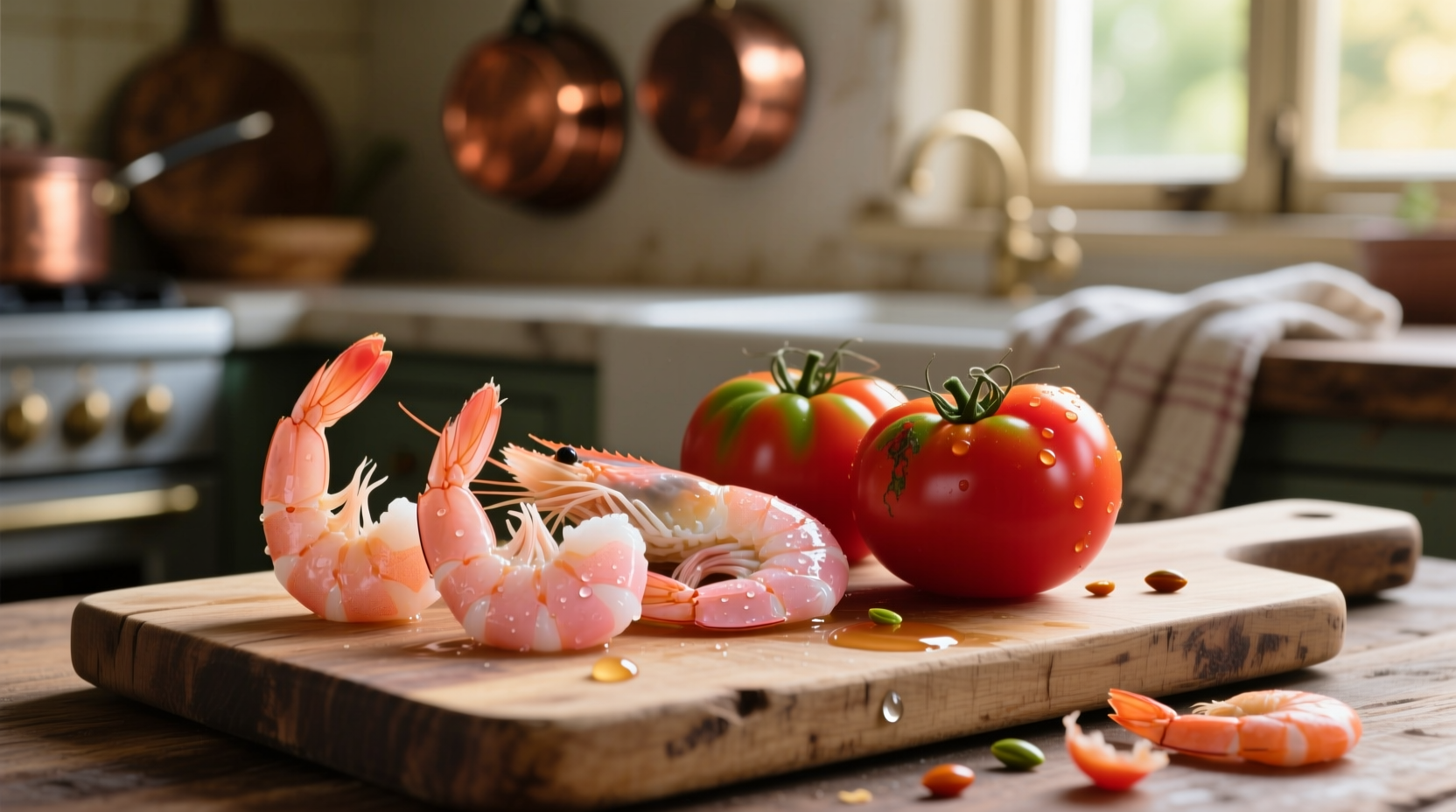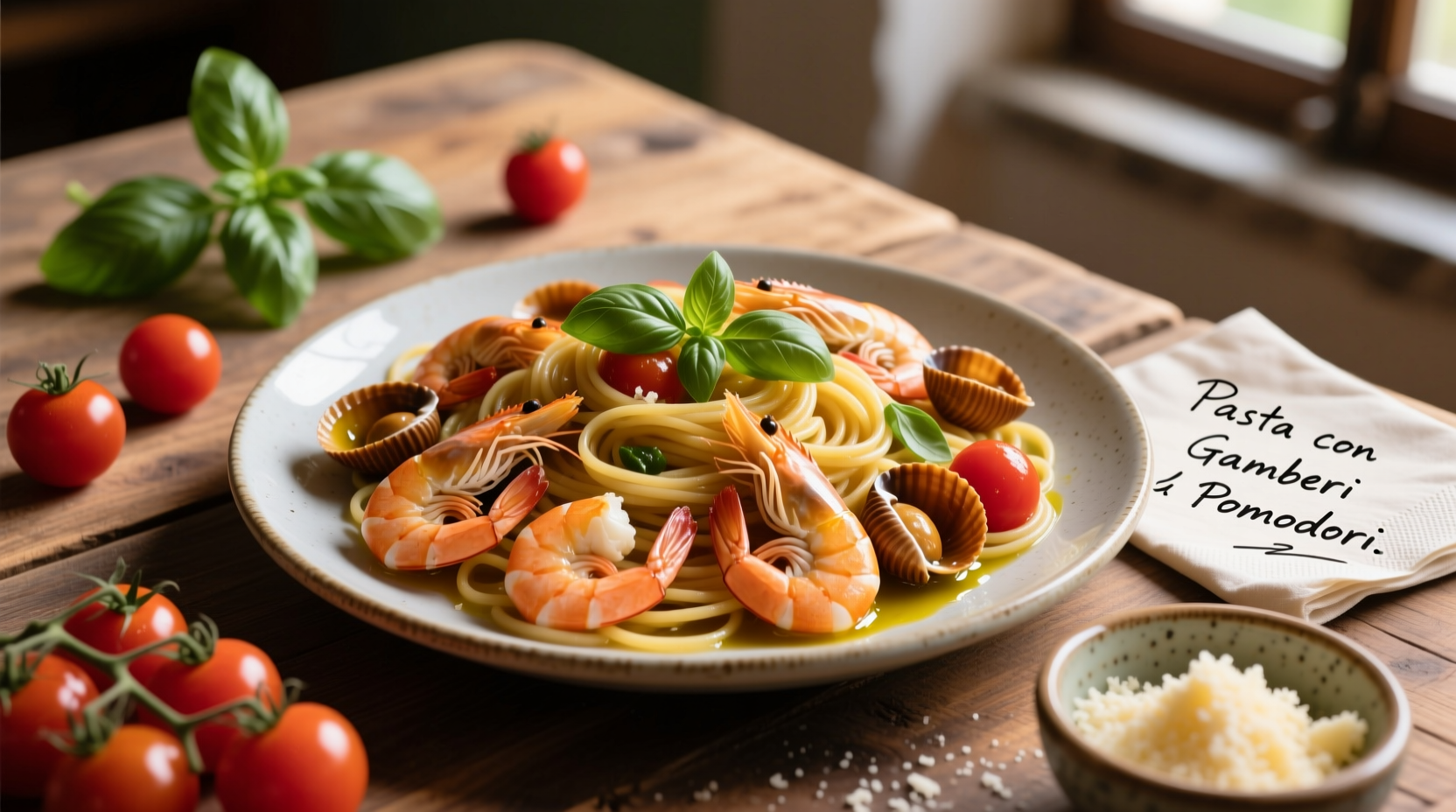Shrimp and tomatoes create one of the most harmonious flavor pairings in global cuisine. This dynamic duo combines the sweet brininess of shrimp with the bright acidity of tomatoes, creating dishes that are simultaneously refreshing and deeply satisfying. Whether you're looking for a quick weeknight dinner or an impressive weekend meal, these recipes deliver maximum flavor with minimal effort.
Why Shrimp and Tomatoes Are Culinary Soulmates
The magic of shrimp and tomato combinations lies in their complementary flavor profiles and textures. Tomatoes contain glutamic acid, which enhances the natural umami in shrimp, creating a synergistic effect that elevates both ingredients. According to culinary science research from the Culinary Institute of America, this pairing works particularly well because:
| Ingredient | Key Compounds | Flavor Contribution |
|---|---|---|
| Shrimp | Glutathione, Glycine | Sweet, briny umami with subtle oceanic notes |
| Ripe Tomatoes | Glutamic acid, Citric acid | Bright acidity balanced with natural sweetness |
| Combined Effect | Synergistic umami enhancement | Complex flavor depth without added salt |
This scientific understanding explains why cultures from coastal Mediterranean regions to Latin American countries have perfected shrimp and tomato combinations over generations. The natural chemistry between these ingredients creates restaurant-quality results even in home kitchens.
Essential Ingredients Guide
Quality ingredients make the difference between ordinary and extraordinary shrimp and tomato dishes. Follow these guidelines for the best results:
Choosing Perfect Shrimp
Look for shrimp with firm, translucent flesh that springs back when gently pressed. Avoid any with black spots, yellowing, or strong ammonia smells. According to FDA seafood guidelines, properly handled shrimp should be stored at 40°F (4°C) or below and used within 1-2 days of purchase. When possible, choose wild-caught shrimp from sustainable fisheries for superior flavor and texture.
Selecting Tomatoes
For cooking applications like sauces and stews, Roma tomatoes provide the ideal balance of fleshiness and acidity. For fresh applications like salsas, vine-ripened or heirloom varieties offer superior sweetness. The USDA recommends choosing tomatoes that feel heavy for their size with smooth, unblemished skin. Avoid refrigerating tomatoes as cold temperatures destroy flavor compounds.

4 Perfect Shrimp and Tomato Recipes
1. Weeknight Shrimp and Tomato Skillet (25 minutes)
This streamlined recipe delivers restaurant-quality results with minimal cleanup—perfect for busy evenings when you want something delicious without the fuss.
Ingredients
- 1 lb (450g) medium shrimp, peeled and deveined
- 3 tbsp olive oil
- 4 garlic cloves, minced
- 1 pint cherry tomatoes, halved
- 1/2 cup dry white wine
- 1/4 cup fresh basil, chopped
- 1/2 tsp red pepper flakes
- Salt and freshly ground black pepper to taste
Instructions
- Heat olive oil in a large skillet over medium-high heat.
- Add garlic and red pepper flakes, sauté for 30 seconds until fragrant.
- Add cherry tomatoes and cook for 3-4 minutes until they begin to burst.
- Pour in white wine and simmer for 2 minutes to reduce slightly.
- Season shrimp with salt and pepper, then add to the skillet.
- Cook for 2-3 minutes per side until shrimp turn pink and opaque.
- Remove from heat, stir in fresh basil, and serve immediately.
Pro Tip: Don't overcrowd the pan when cooking shrimp—this prevents steaming and ensures proper searing. Cook in batches if necessary.
2. Mediterranean Shrimp and Tomato Stew
This rich, flavorful stew showcases how shrimp and tomatoes shine when combined with traditional Mediterranean ingredients.
Key Technique: Building Flavor Layers
The secret to exceptional flavor in this dish is the proper sequence of ingredient addition. Start with aromatics (onion, garlic), then add tomatoes to cook down and concentrate their flavor, followed by broth, and finally the shrimp. This layering technique creates depth that single-step cooking cannot achieve.
3. Shrimp and Tomato Pasta with Fresh Herbs
This elegant yet simple pasta dish demonstrates how shrimp and tomatoes complement starch-based meals. For best results, reserve 1/2 cup of pasta water before draining—the starchy liquid helps create a silky sauce that clings perfectly to both the pasta and shrimp.
4. Spicy Shrimp and Tomato Ceviche
This refreshing raw preparation highlights the bright, clean flavors of both ingredients. When making ceviche, remember that the "cooking" time in citrus juice is critical—8-12 minutes for shrimp is ideal. Longer than 15 minutes results in tough, rubbery texture as the acid over-cooks the protein.
Avoiding Common Shrimp Cooking Mistakes
Even experienced home cooks often make these critical errors when preparing shrimp dishes:
- Overcooking: Shrimp cook extremely quickly—2-3 minutes per side is usually sufficient. They're done when they turn opaque and form a loose "C" shape. Overcooked shrimp become tough and rubbery.
- Improper Thawing: Never thaw shrimp at room temperature. Instead, place frozen shrimp in a sealed bag and submerge in cold water for 10-15 minutes, changing water once.
- Skipping Pat-Drying: Excess moisture prevents proper searing. Always pat shrimp thoroughly dry with paper towels before cooking.
- Adding Shrimp Too Early: In tomato-based dishes, add shrimp during the final minutes of cooking to prevent overcooking.
Serving Suggestions and Pairings
Shrimp and tomato dishes pair beautifully with:
- Crusty bread for soaking up delicious sauces
- Simple green salads with lemon vinaigrette
- Cilantro-lime rice for Latin-inspired meals
- Crusty baguette with garlic butter for Mediterranean versions
For wine pairings, select a crisp white like Sauvignon Blanc or a light-bodied rosé that won't overpower the delicate shrimp flavor.
Storage and Reheating Guidelines
Store leftovers in an airtight container in the refrigerator for up to 2 days. When reheating, use gentle methods to prevent overcooking:
- Stovetop: Warm over low heat with a splash of broth or water
- Microwave: Heat in 30-second intervals at 50% power
- Never reheat shrimp in a dry pan—always include some liquid
Freezing cooked shrimp is not recommended as it significantly degrades texture. For best results, freeze raw shrimp following FDA guidelines: place in airtight container with 1/2 inch of headspace, removing as much air as possible.
Frequently Asked Questions
Can I use frozen shrimp for shrimp and tomato recipes?
Yes, frozen shrimp work well in most shrimp and tomato recipes. Properly thaw frozen shrimp by placing them in a sealed bag submerged in cold water for 10-15 minutes. Never thaw at room temperature. For best texture, use frozen shrimp within 3-6 months of freezing and avoid refreezing thawed shrimp.
How do I prevent shrimp from becoming rubbery in tomato dishes?
Add shrimp during the final 3-5 minutes of cooking. Shrimp continue to cook from residual heat after removal from the stove, so remove them just before they reach desired doneness. For tomato-based dishes, add shrimp after the tomatoes have simmered and reduced, as the acidity can toughen shrimp if cooked too long.
What's the best type of tomato for shrimp recipes?
Roma tomatoes work best for cooked dishes due to their lower water content and robust flavor. For fresh applications like ceviche or salsas, vine-ripened or heirloom tomatoes provide superior sweetness. Cherry tomatoes are excellent for quick skillet preparations as they burst easily and create instant sauce.
Can I make shrimp and tomato dishes ahead of time?
Prepare the tomato component ahead of time, but add shrimp just before serving. Cooked shrimp reheats poorly, so for best results, cook the tomato base in advance, refrigerate, then add fresh shrimp during final cooking. The tomato base can be made 1-2 days ahead and reheated before adding raw shrimp.











 浙公网安备
33010002000092号
浙公网安备
33010002000092号 浙B2-20120091-4
浙B2-20120091-4